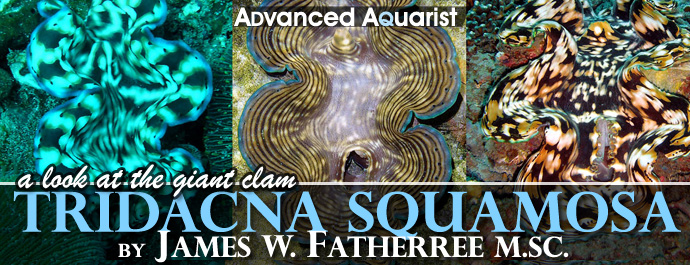
To start, T. squamosa ranges from the east coast of Africa across the Indo-Pacific to the Marshall Islands and Polynesia, and has been found as far north as the southern islands of Japan to as far south as the west coast of Australia and the Great Barrier Reef, and in the Red Sea, too. However, this species’ abundance in the Indian Ocean isn’t well known, and it has been over-fished for food in some areas, making it rare to extinct in some parts of its natural range.
This species can also be found in a wide variety of environments within its range, from steep walls to reef flats, to patch reefs, and inside and outside of lagoons, etc. Basically, these clams aren’t very picky, and I’ve seen them living in basically all of these settings around Indonesia and Australia. Regardless, they typically live at depths less than 50 feet, and occur in greatest numbers at depths less than twenty feet.
While this species can be found living amongst coral groves and on rubble and sandy/soft bottoms at times, it’s most often found attached to hard substrates, especially when relatively young. To form such an attachment, they produce a structure called a byssus, which is made by an organ found on the underside of the body. This byssal organ secretes a liquid substance that hardens quickly to form a number of tough fibers, and these extend from an opening in the bottom of the shell, with one end of the fibers solidly attached to a rock, coral, etc. and the other held inside the shell by the byssal organ. This keeps a clam from being knocked over or moved around by waves until it’s large enough to stay in place due to its weight. Still, even at large sizes, a clam can be knocked over at times, but giant clams can usually self-right themselves by repeatedly opening and closing their bottom-heavy shell. Each time the shell is opened fully, it rocks a bit more into the correct orientation.

T. squamosa is often found living amongst corals or attached to hard substrates, but may also live unattached on soft bottoms.
While the byssal opening at the bottom of the shell may be prominent when a clam is young, it can be closed up by the addition of new shell material when a clam gets large enough to release its byssal hold. So, small clams typically (but not always) have a relatively large opening in the bottom of the shell while large ones have no opening at all.
Staying in an upright orientation is critical because, like all the other members of the family, T. squamosa harbors large populations of zooxanthellae. These single-celled photosynthetic algae live in the tissues of a host clam primarily within a specialized system of tubes that permeate the fleshy, colorful, mantle tissue that extends from the top of the shell, and when given enough light, they can make far more food than they need for themselves. The extra food (in the form of carbon and energy-packed glucose) is then given to the clam host, which is the same thing that occurs within most reef-dwelling corals.
Under optimal conditions these zooxanthellae are constantly multiplying within a tridacnid, and some of these live algal cells can be digested by specialized amoeboid cells within the host, too. So, a host clam can rely on its zooxanthellae for more than just sugar, and is considered to be a “farmer” to some degree since it can consume these surplus zooxanthellae grown inside its body.
In addition, all tridacnids can also absorb a variety of nutrients directly from seawater. Their fleshy mantle is covered by a specialized tissue that can very effectively take in dissolved nutrients like ammonia, nitrate, and phosphates. So, here they have a third means of nutrient acquisition, with one more to go.
The last way they cover their nutritional needs is through filter-feeding. All tridacnids can eat fine particulate matter strained from surrounding waters by their specialized gills, which not only work to exchange carbon dioxide and oxygen, but can also act as sieves that can collect such particles. A tridacnid, like most other clams, pumps water into its body chamber, where it flows over the finely-branched gills and then flows out the other end of the body chamber, minus some particulates. These collected bits can include phytoplankton, zooplankton, and detritus, meaning they can make use of a broad range of things.
Identification
When it comes to identification, once you know what to look for T. squamosa is usually pretty easy to distinguish from all other tridacnids with the possible exception of T. maxima. So, I’ll go over the basic features used to identify T. squamosa, and give you a couple of tips on how to differentiate them from T. maxima, too.
T. squamosa’s shell is typically rather fan-shaped, can reach a maximum length of just over sixteen inches (Rosewater, 1965), and is usually white to grayish-white. However, at times it may be partially or even entirely yellowish, orangish, or pink, and having a yellow band along the upper edge is common, as well. Keep in mind that 16 inches is the world’s record, though. So, it’s unlikely that a specimen you might buy would get nearly this big in an aquarium, as even a twelve inch specimen would normally be considered particularly large.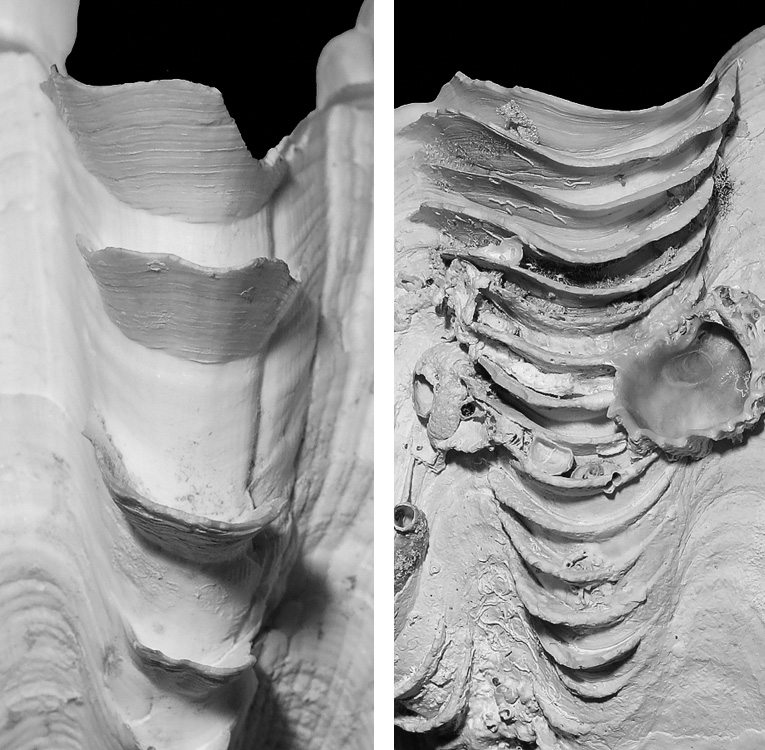
T. squamosa’s shell is also covered with prominent scutes, which are the blade or petal-like structures that cover the ridges on the shells of some species. However, in T. squamosa’s case, these are especially large in size, relatively heavy/strong, and widely-spaced, unlike those of any of the other species. Many scutes, particularly near the bottom of the shell, may be broken/missing, but larger scutes are typically quite durable. So, having a fan shaped shell with notably large scutes is usually all you need to look for when trying to positively identify a specimen.
Aside from differences in the mantle, the scutes lining the shell of T. squamosa (L) are larger and widely spaced relative to those of T. maxima (R). Also, while there are exceptions, T. maxima’s shell is typically elongated rather than fan-shaped.
Still, most folks will look at the fleshy mantle more than the shell, so I should say something about it too, of course. The mantle most commonly has a brown base color, which is covered by numerous golden brown, cream, and/or white lines and splotches. However, there can also be other colors and patterns, as some have various stripes, spots, and blotches of green, orange, and/or blue. Some less common specimens also have a predominantly blue mantle with dark markings.

Here’s another look at how diverse the mantle coloration of various specimens can be. (click photo to enlarge)
When healthy, the mantle reaches well beyond the edges of the shell, and usually extends far enough to completely cover the shell when viewed from above. And, the inhalent siphon, the large opening in the mantle where water is brought into the body, is almost always ringed with numerous relatively large tentacles that have prominent branches.

Specimens with lots of blue on their mantles are much harder to come by, and are typically very expensive. (click photo to enlarge)
And lastly, there are typically rows of dark-colored simple eyes found along the edge of the mantle, which is why they often react by jerking into their shell when something swims over them. Healthy specimens will do this if you pass your hand between them and the lights, too.
Aquarium Care
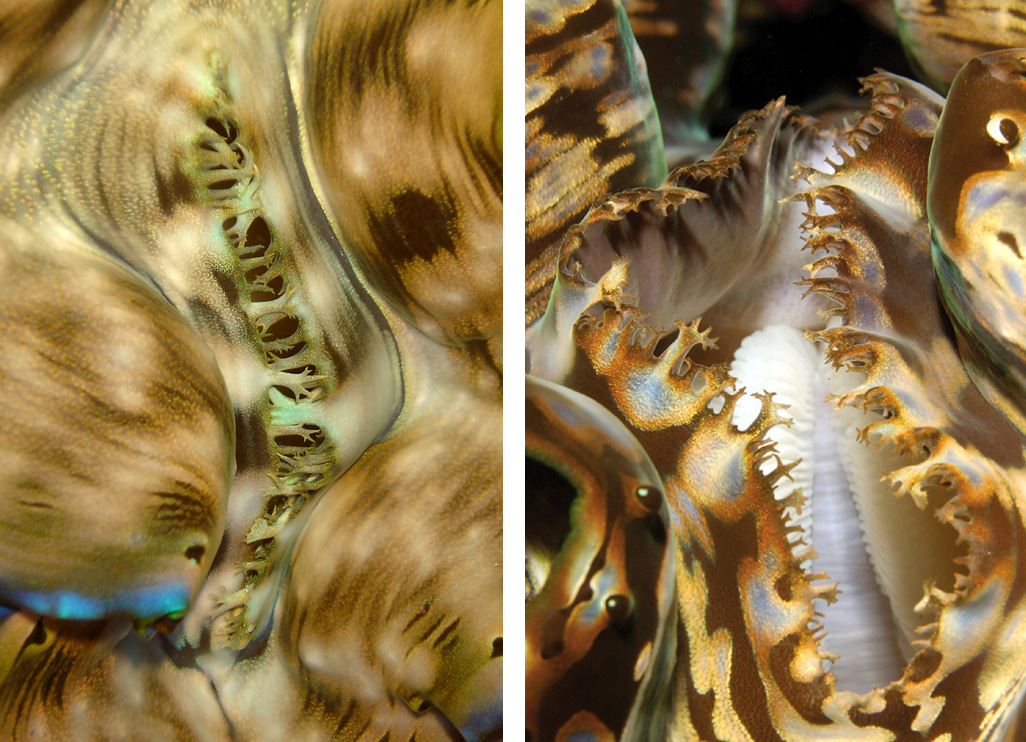
The tentacles surrounding T. squamosa’s inhalent siphon are relatively large and have prominent branches.
Alright, with that stuff out of the way, we can get to some husbandry info. To start, as far as water quality goes, it should always be within the limits of what is considered appropriate for any reef aquarium. When specimens are very small in size, the maintenance of calcium and alkalinity isn’t any particular problem, but that can change as clams get bigger. This is due to the fact that when a tridacnid adds on shell material, it doesn’t just make the shell longer and taller at the edges. When growing, these clams also add on a significant amount of material to the inside of its shell. It gets thicker and thicker and is quite dense, so a large specimen can really suck up the calcium/alkalinity in a tank, depleting it surprisingly quickly. This is especially the case if there are lots of corals to compete with. So, make sure you keep up with their demands.
Other than that, providing sufficient lighting is really the most important aspect of their care.
Again, T. squamosa lives at relatively shallow depths where they receive intense light, so fluorescent lighting is a poor choice for anything other than rather shallow tanks, unless a specimen is placed high up on the rockwork near the water’s surface in a deeper tank. I would try fitting as many bulbs into a fluorescent canopy/fixture as possible at that, and mount the bulbs close to the water, too.
Some giant clams, like T. derasa and T. gigas in particular, may be able to get by at times with less light, or further down in deeper tanks, but you shouldn’t take any chances with T. squamosa. Metal halide lighting or comparable LED systems are your best option, with standard 175 watt metal halide bulbs typically being sufficient for any small to medium size tanks. For deeper tanks you may need to move up to higher-intensity bulbs, though.
This might sound like a lot of light to many successful coral keepers, but that’s because giant clams aren’t corals. Corals are very simple organisms that have no real “guts” to speak of, while giant clams have all the organs you’d expect to find in more complex animal. Like the other species, T. squamosa has gills, a heart, a stomach, kidneys, and gonads, etc., so it needs far more calories than a coral needs to get through a day. I can assure you that it’s entirely possible to have plenty of light for corals to grow very well, but still not have enough to keep a giant clam. Each individual clam has its own requirements at that, with some needing more light than others, even at the same size. To add, you cannot give a tridacnid too much light as long as a specimen is given time to adapt to intense lighting, so it’s better to err on the bright side than the dim side. Don’t take any chances!
When it comes to water flow, these clams typically live where they’re regularly exposed to strong currents and wave activity. So, they’re quite used to strong, surging water motion. Thus, it’s perfectly okay to expose them to a surging or turbulent flow, but putting a specimen in a spot where a pump blasts it with a strong, non-stop linear current is not recommended. Basically, what you need to avoid is putting a specimen anywhere that currents cause its mantle to fold upwards or over onto itself all the time, or an even stronger flow that makes a specimen chronically retract its mantle. On the other hand, it’s hard to have it too slow as long as the water constantly flows over/around them.
With that said, when it comes to placement in a tank, you obviously don’t have to worry about putting a specimen in exactly the right spot on the right substrate, either. While T. squamosa is most commonly found on hard substrates, placing a specimen on any substrate seems to work fine. Again, I’ve seen them living on rubble, sand, and muddy sand in the wild.
Lastly, T. squamosa doesn’t need to be fed anything as long as a specimen is kept under sufficient lighting in a well-stocked aquarium with several fishes. Again, all giant clams are very good at absorbing many of the nutrients they require directly from surrounding waters, and the fishes in an aquarium are the source of these nutrients. Basically, you feed the fishes, and the wastes they give off become a food source for any clams present. So, as long as you have several fishes and feed them well, there won’t be any need to provide T. squamosa with any sort of food. You may have heard otherwise, but I assure you this is true, as I’ve had many, many clams over the years and haven’t had to feed them anything. If you’re curious, more details on this particular topic can be found in my article Tridacnid Clams (Usually) Don’t Need to Be Fed in Aquaria in the July 2010 issue, and even more related information is included in Giant Clams in the Sea and the Aquarium (Fatherree, 2006).
References and sources for more information
- Fatherree, J.W. 2006. Giant Clams in the Sea and the Aquarium. Liquid Medium. Tampa, FL. 227pp.
- Fatherree, J.W. 2010. Tridacnid Clams (Usually) Don’t Need to Be Fed in Aquaria. Advanced Aquarist, URL: http://www.advancedaquarist.com/2010/7/inverts
- Rosewater, J. 1965. The family Tridacnidae in the Indo-Pacific. Indo-Pacific Mollusca 1:347-396.


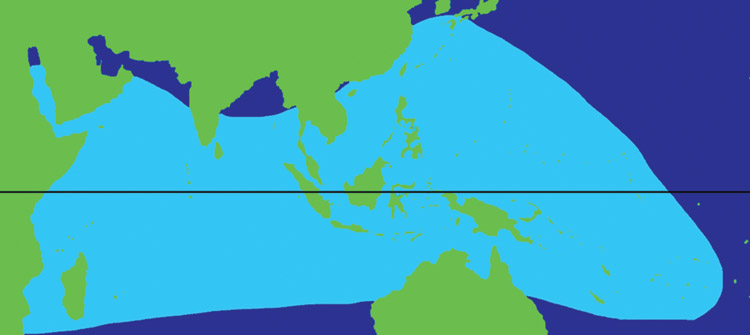
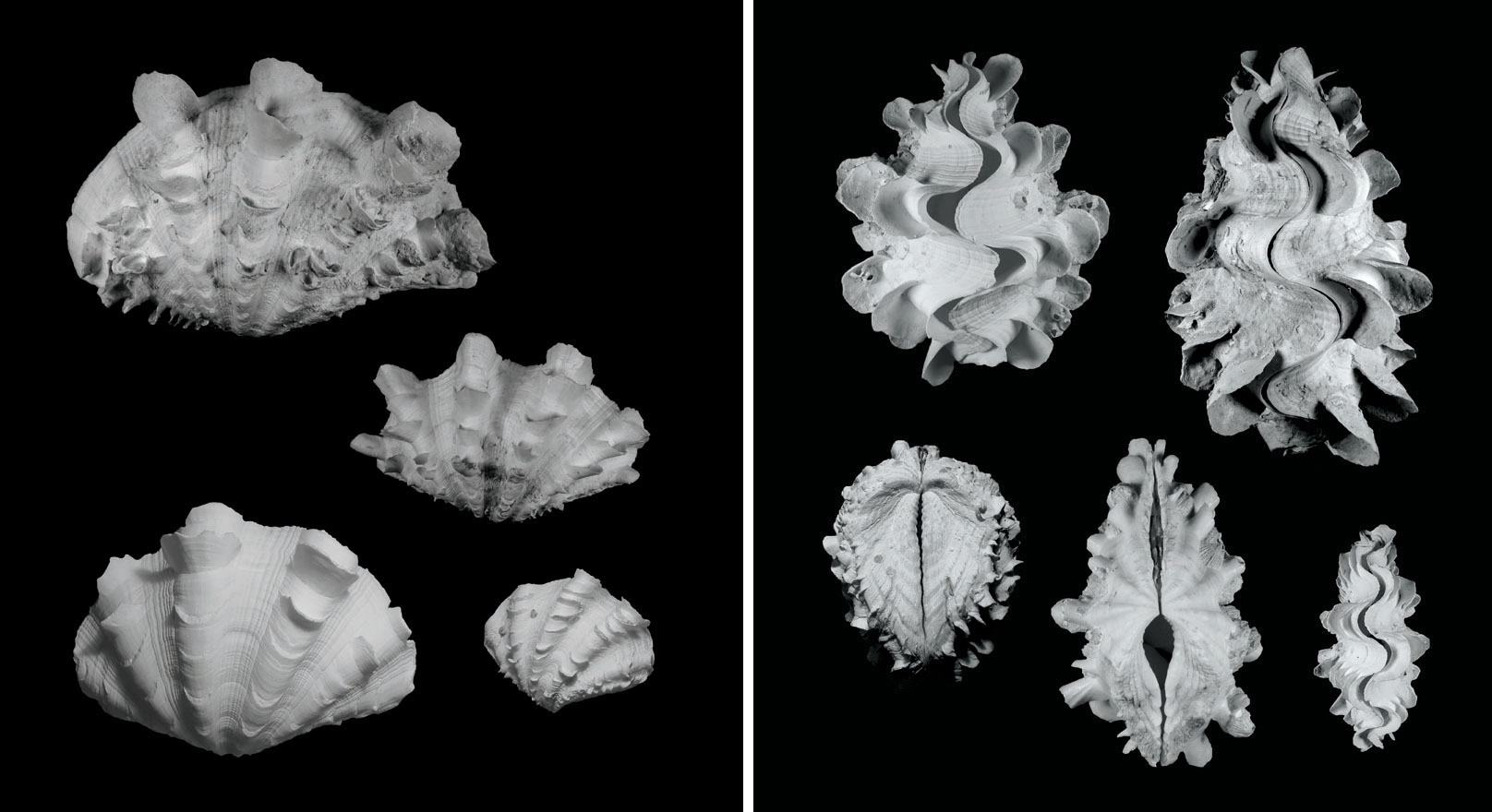
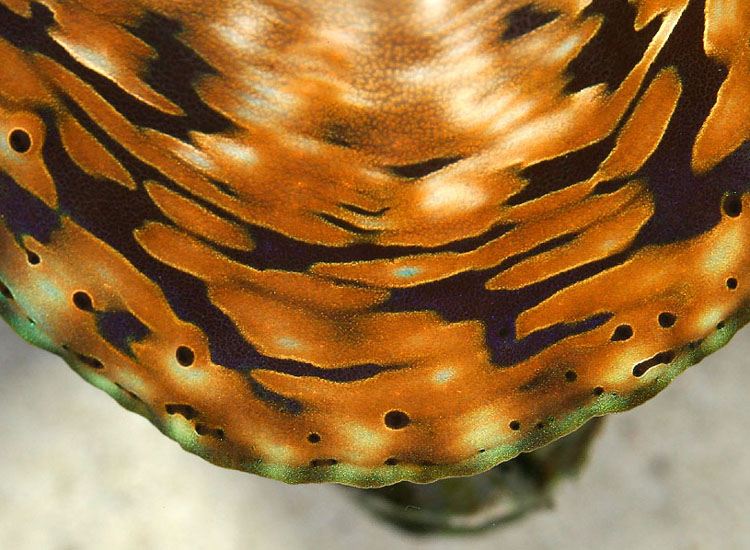

I have twice now found shells of these guys on the Puget Sound harbor in Seattle, WA! I identified the shell from your images. I thought it was so fascinating, and I’ve never seen a shell quite like it before, so I was very curious. Thank you for the informative article.